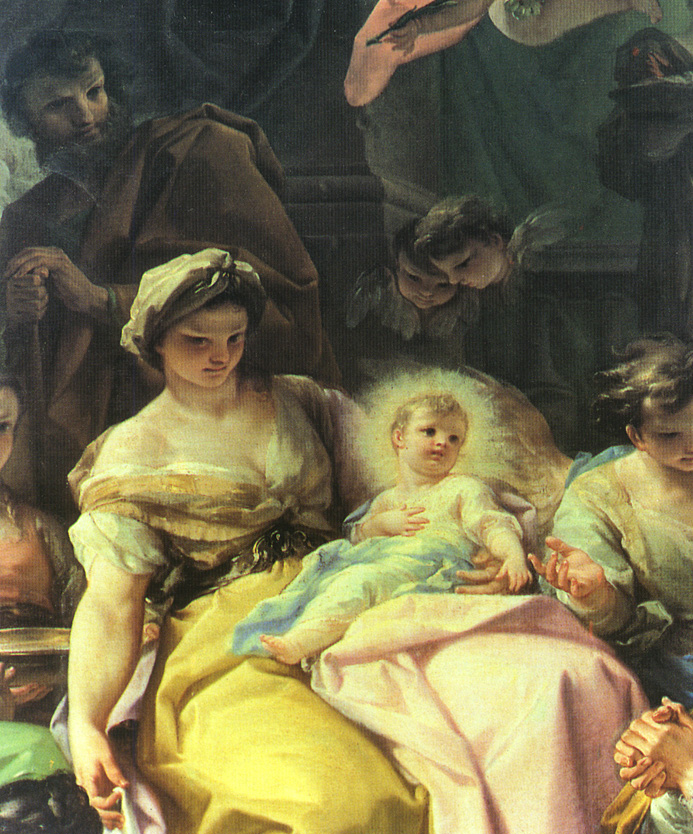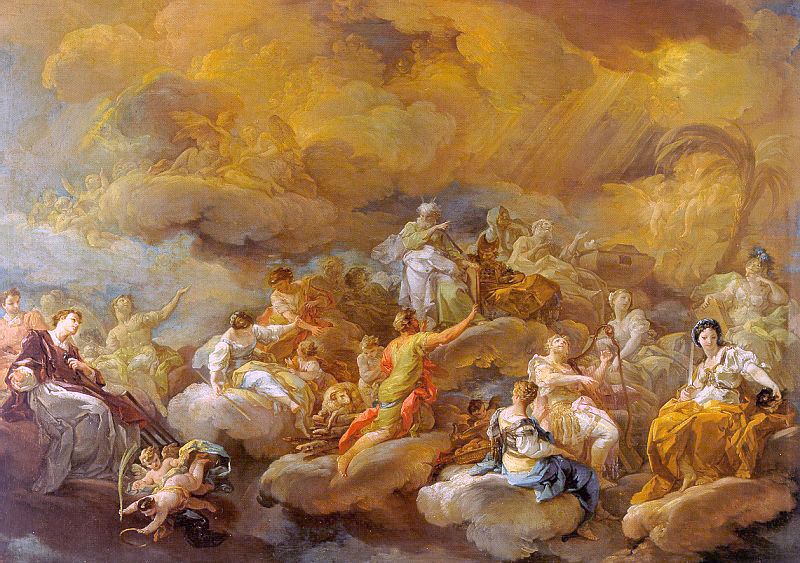Corrado Giaquinto (1703 -1765)
Get a Giaquinto Certificate of Authenticity for your painting (COA) for your Giaquinto drawing.
For all your Giaquinto artworks you need a Certificate of Authenticity (COA) in order to sell, to insure or to donate for a tax deduction.
Getting a Giaquinto Certificate of Authenticity (COA) is easy. Just send us photos and dimensions and tell us what you know about the origin or history of your Giaquinto painting or drawing.
If you want to sell your Giaquinto painting or drawing use our selling services. We offer Giaquinto selling help, selling advice, private treaty sales and full brokerage.
We have been authenticating Giaquinto and issuing certificates of authenticity since 2002. We are recognized Giaquinto experts and Giaquinto certified appraisers. We issue COAs and appraisals for all Giaquinto artworks.
Our Giaquinto paintings and drawings authentications are accepted and respected worldwide.
Each COA is backed by in-depth research and analysis authentication reports.
The Giaquinto certificates of authenticity we issue are based on solid, reliable and fully referenced art investigations, authentication research, analytical work and forensic studies.
We are available to examine your Giaquinto painting or drawing anywhere in the world.
You will generally receive your certificates of authenticity and authentication report within two weeks. Some complicated cases with difficult to research Giaquinto paintings or drawings take longer.
Our clients include Giaquinto collectors, investors, tax authorities, insurance adjusters, appraisers, valuers, auctioneers, Federal agencies and many law firms.
We perform Corrado Giaquinto art authentication, appraisal, certificates of authenticity (COA), analysis, research, scientific tests, full art authentications. We will help you sell your Corrado Giaquinto or we will sell it for you.

Corrado Giaquinto was an Italian Rococo painter. As a boy, Giaquinto apprenticed with a modest local painter Saverio Porta, (c1667-1725), escaping the religious career his parents had intended for him. By October 1724, he left Molfetta, and along with contemporary Francesco de Mura (1696-1784) and Giuseppe Bonito (1707-1789), he trained from 1719-23 in the prolific Neapolitan studio of Francesco Solimena, either with Solimena or his pupil, Nicola Maria Rossi. Throughout his life, Giaquinto was a peripatetic painter, with long soujourns in Naples, Rome (between 1723-53), Turin (1733 and 1735-9), and Madrid (1753-1761).

In 1723, he moved to Rome to work in the studio of Sebastiano Conca. He painted in San Lorenzo in Damaso, San Giovanni Calibita, and the ceiling at Santa Croce in Gerusalemme. In March 1727, Giaquinto opens, along with Giuseppe Rossi as an assistant, an independent studio near the Ponte Sisto, in the parish of Saint Giovanni of the Malva in Rome. In 1734, he marries Caterina Silvestri Agate.
The first documented work by his hand is Christ crucified with the Madonna, Saint John Evangelist, and Magdalene commissioned in 1730 by king John V of Portugal for the cathedral of the Mafra. In 1731, he received a prestigious commission, to execute frescoes in the church of San Nicola dei Lorenesi: Saint Nicholas water gush from cliff, three theologic and cardinal Virtues, and in the cupola Paradise. The latest restoration confirms Giaquinto’s stylistic independence from Solimena, and how his style shows greater dependence on Luca Giordano,

In 1733, the architect and artistic director for the House of Savoy, Filippo Juvarra, invites Giaquinto to Turin, where he completes an altarpiece of Saint John Nepomunk. He then decorates the ceiling of a Villa della Regina with a triumph of the House of Savoy, destroyed during World War II – Death of Adonis and Apollo & Daphne, and Story of Aenid. Giaquinto returns briefly Rome in 1735, where his wife dies soon after childbirth. He then returns for the next three years, to complete frescoes for the chapel of Saint Giuseppe in the Turinese church of Santa Teresa; they depict events in the life and death of Saint Joseph, including his Assumption and Rest in Egypt.

Giaquinto returns to Rome in 1738, and executes the next year, frescoes an Assumption of the Virgin for the church of Rocca di Papa, a commission for a relative of Pope Alexander VIII Ottoboni. In 1740, Giaquinto becomes a member and donates to Academy of Saint Luke, his sketch of Immaculate Conception with Elias the prophet for the Turinese church of the Carmine, a canvas commissioned by marquis Giuseppe Turinetti di Priero, which finally reached Turin in 1741. A report of 1742, states that Pope Benedict XIV “was taken to the church of San Giovanni Calabita… where he observed with much pleasure the restoration of that Church embellished with altapieces from the Painter Signor Corrado Napolitano.
In Madrid, he was patronized by Ferdinand VI, and was ultimately appointed director of the Academy of San Fernando. His influence there was felt by painters such as González Velázquez, José del Castillo, and Salvador Maella. His paintings include A Kneeling Male Nude. He returned to Naples in 1762-1766 to decorate the sacristy in San Luigi di Palazzo, the royal monastery. He is described by some as an Italian Francois Boucher.

Still wondering about an Italian painting in your family collection? Contact us…it could be by Corrado Giaquinto.
Reviews
1,217 global ratings
5 Star
4 Star
3 Star
2 Star
1 Star
Your evaluation is very important to us. Thank you.
